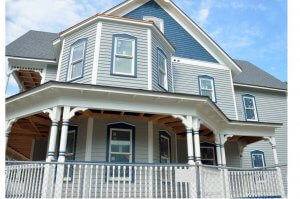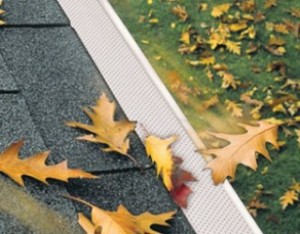4 Signs Your Vinyl Siding Might Be Taking on Water
It’s been a wet few months for homeowners throughout Southern Ontario . All that rain means it’s important to keep an eye on your vinyl siding, making sure there aren’t any weak spots where water can weasel its way in.
. All that rain means it’s important to keep an eye on your vinyl siding, making sure there aren’t any weak spots where water can weasel its way in.
Check out these four signs that water might be getting under your vinyl siding and into your home:
1. Evidence of Water Damage inside Your Home
Pay attention to what you see and where you see it:
- Do you have a bathroom, kitchen, or laundry room above where the stain is located? That could be an indication that you’re dealing with some plumbing issues.
- Do you see discolouration along the top edge of your wall (where it meets your ceiling)? That tells you that the source of the problem might be your roof.
- Do you see any rot, pooling water, or holes in your window sill? That could be evidence that a damaged window is to blame.
If you answered no to those questions, the real culprit might be your vinyl siding. Get in touch with a home contractor to schedule an in-home consultation. They’ll be able to tell you where the problem is really coming from, fixing it where it started so it doesn’t come back.
Should you repair or replace outdated windows? Read our blog to find out!
2. Stains on the Outside of Your Siding
Do a walk-around inspection of your home’s exterior, keeping an eye out for blemished patches on your vinyl siding.
If you find any, look closer for things like:
- Evidence of damage like a crack or chip. Although vinyl siding is renowned for its durability, it can be prone to the occasional bruise caused by something like rocks being whipped around by a snowblower during the winter.
- Points of deterioration, including nails that have popped out or panels that have buckled, leaving your siding vulnerable to Mother Nature’s springtime whims.
If the harm is minor and caught early, you might be able to get away with simply replacing the portion of affected siding. If your vinyl siding is older or the problem has spread, however, it might be time to consider a replacement.
3. Gaps between J-Channel and Trim around Your Windows
This is as much a symptom as it is a sign. J-Channel is used around the edges of your windows and doors, letting vinyl siding breath (expand and contract) as it needs to throughout the year without compromising its weathertight seal.
If there are gaps between your J-Channel and the surrounding trim, that’s a cause for concern. An improperly sealed J-Channel can easily let water in and cause damage to your home’s interior and exterior walls.
The fix here is to re-caulk as necessary around your J-Channel. This might be a task you can tackle yourself, particularly if the affected window can be accessed safely and you’re experienced at applying caulking. When in doubt, though, always contact a professional home contractor.
4. Faulty Eavestroughs
Problems with your eavestroughs will typically be easy to identify:
- Eavestroughs That Are Overflowing: If water is regularly coming over the sides of your eavestroughs (even during moderate rains), that’s likely a sign that they’re clogged with debris. That causes water to back up, forcing it over the edges instead of towards and down the downspout.
- Eavestroughs That Are Pulling Away: This can become a problem after particularly icy winters that saw ice buildups in your eavestroughs. If water is unable to flow from your roof directly into your eavestroughs, it can slip through the cracks in between, run down the side of your house, and get under your vinyl siding.
If you catch the problem in time, repairing your eavestroughs might do the trick. If the extent of the damage is worse, you’ll need to look at fixing your eavestroughs, siding, and any structural deterioration that’s happened as a result.
To ensure the best results, work with a professional home contractor. They’ll be able to assess what’s happening and provide guidance on the next steps you can take to keep water away from your vinyl siding and out of your home.
At Quality Exteriors, we are committed to providing vinyl siding that will withstand the elements. That means resisting chips, peeling, scratches, fading, and more. Contact us today to schedule your free in-home estimate!
Like this? You might also like:
- How to Clean Your Vinyl Siding This Spring
- Do You Know How to Properly Maintain Your Siding? [Infographic]
- 5 Tips for Cleaning Your Eavestroughs This Spring
- When to Request an Estimate for Exterior Work - February 26, 2020
- Merry Christmas from Quality Exteriors - December 18, 2019
- Quality Exteriors Listed In Top 3 Window Companies In St. Catharines - December 5, 2019






